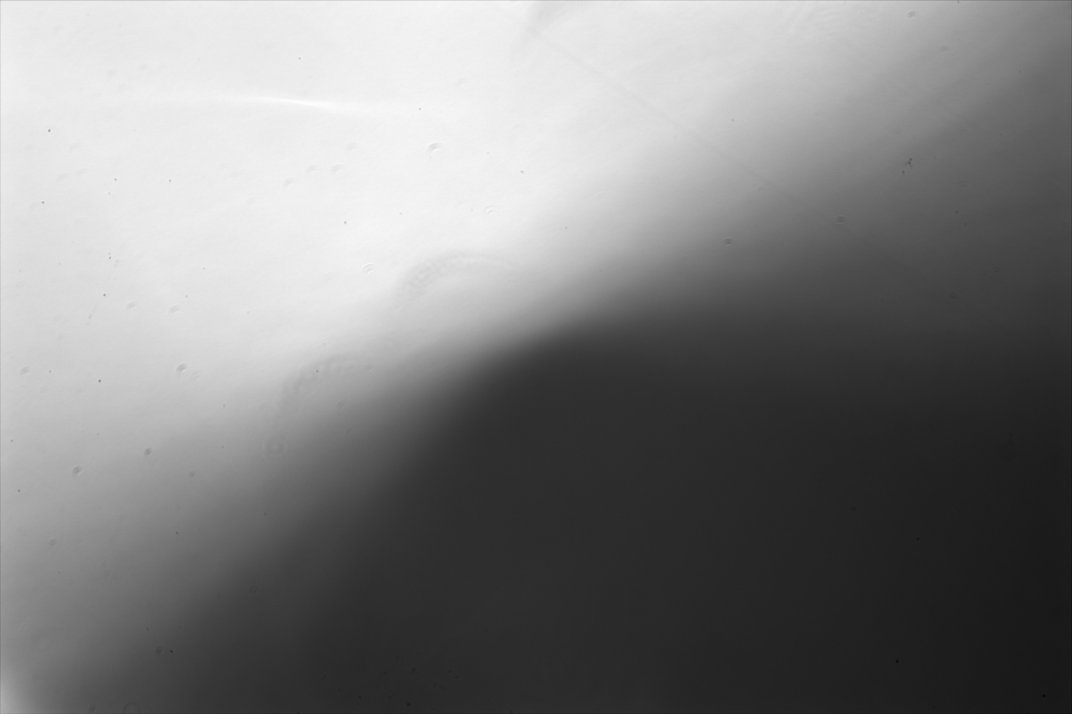
A raw image from the series, only reduced in size. The original has 3072x2048 pixels, just as it emerges from the camera, a Sigma 6303.
This example uses 14 images from the 4th series taken on June 15th 2007, between 08:35 and 08:45, less then 3.5 hours after new-moon.

A raw image from the series, only reduced in size. The original has 3072x2048 pixels, just as it emerges from the camera, a
Sigma 6303.
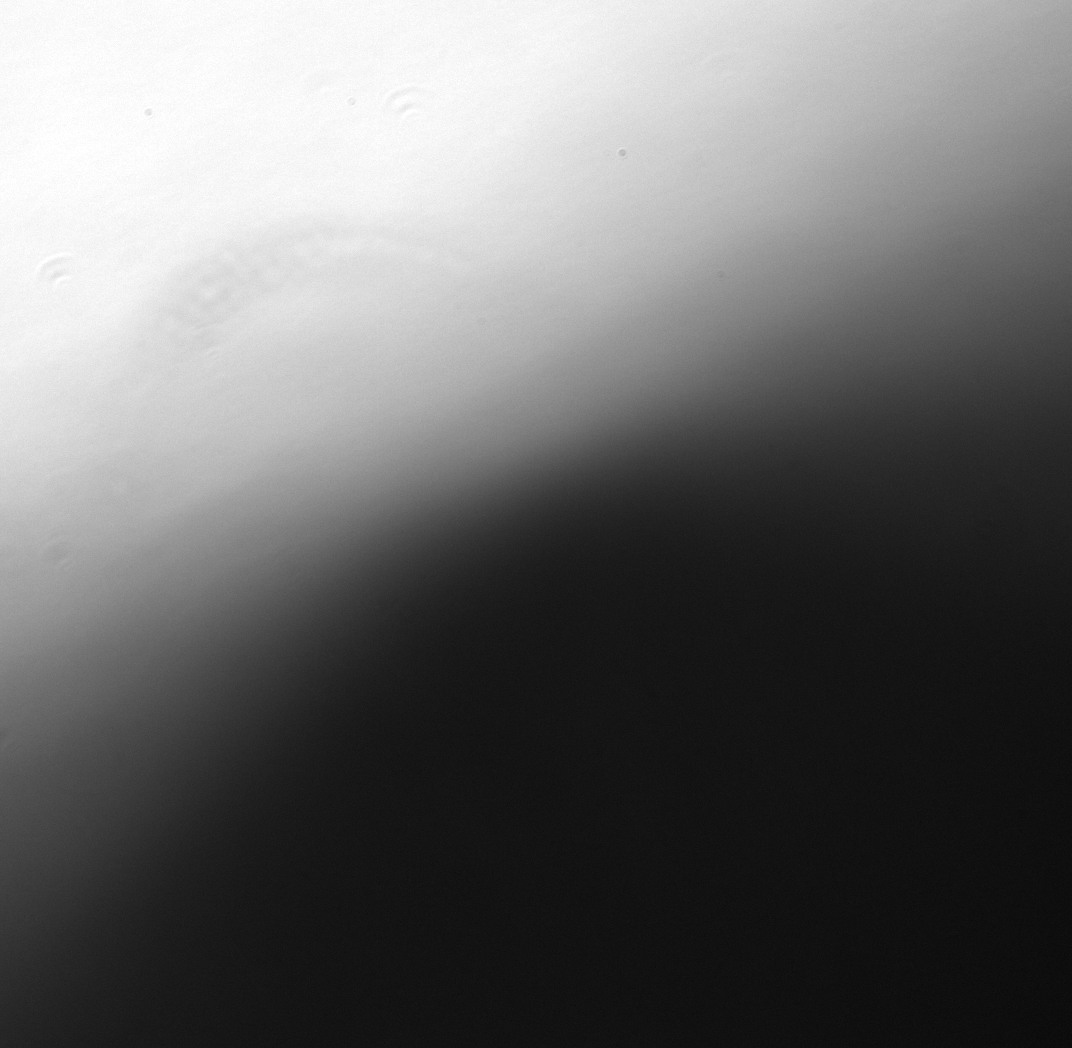
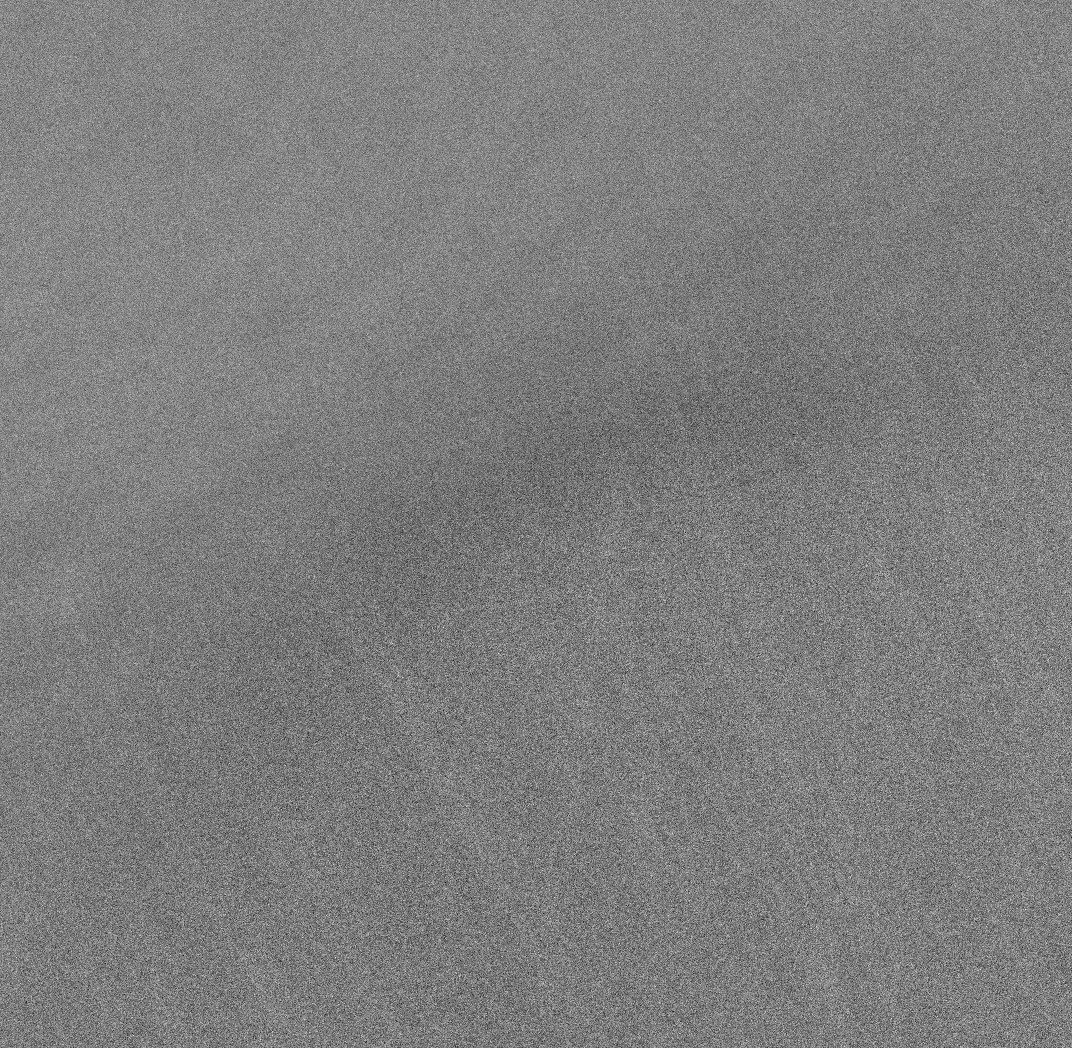
Each raw image was divided through the average of all 14 images of the series, to remove static structures with this "flatfield". As the crescent itself moves from one image to the next it was averaged out in the flat and thus did not get damaged in the raw images.
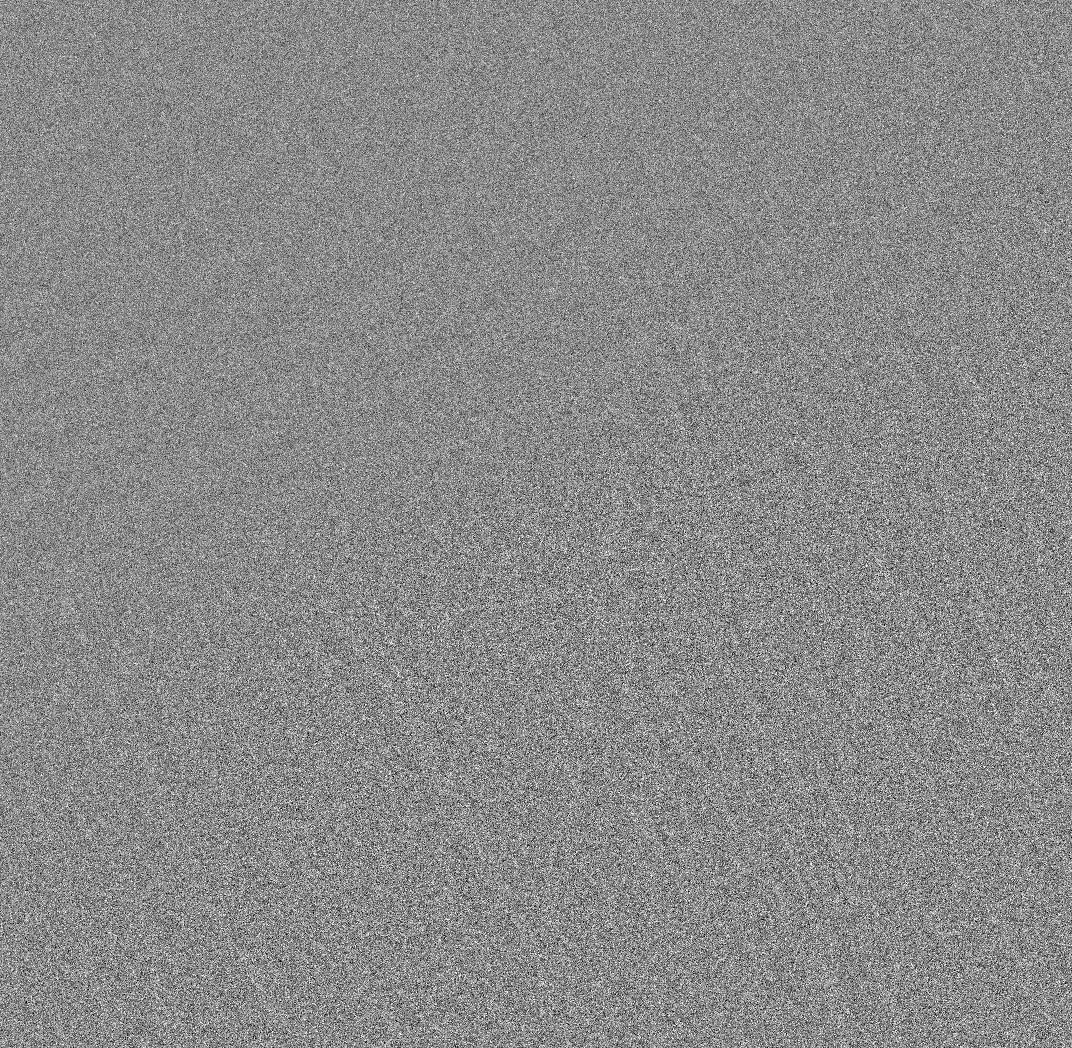
For each average-flat processed raw image a Auto-Flat was created, by applying a strong gaussian-blur to the image. Each image was divided by its own Auto-Flat, to remove even more variations in the background.
The crescent was not damaged in this step, as the gaussian-blur removed such fine detail from each AutoFlat.
The horizontal part of the crescent can now be discerned in the center of the image. It becomes well visible, by comparing all the similarily processed images of the series. A video made from the images of the series shows the crescent more clearly.
This is the video of the 3.5h old lunar crescent (3MB!) from the images of the series. The crescent can be seen as moving structure.
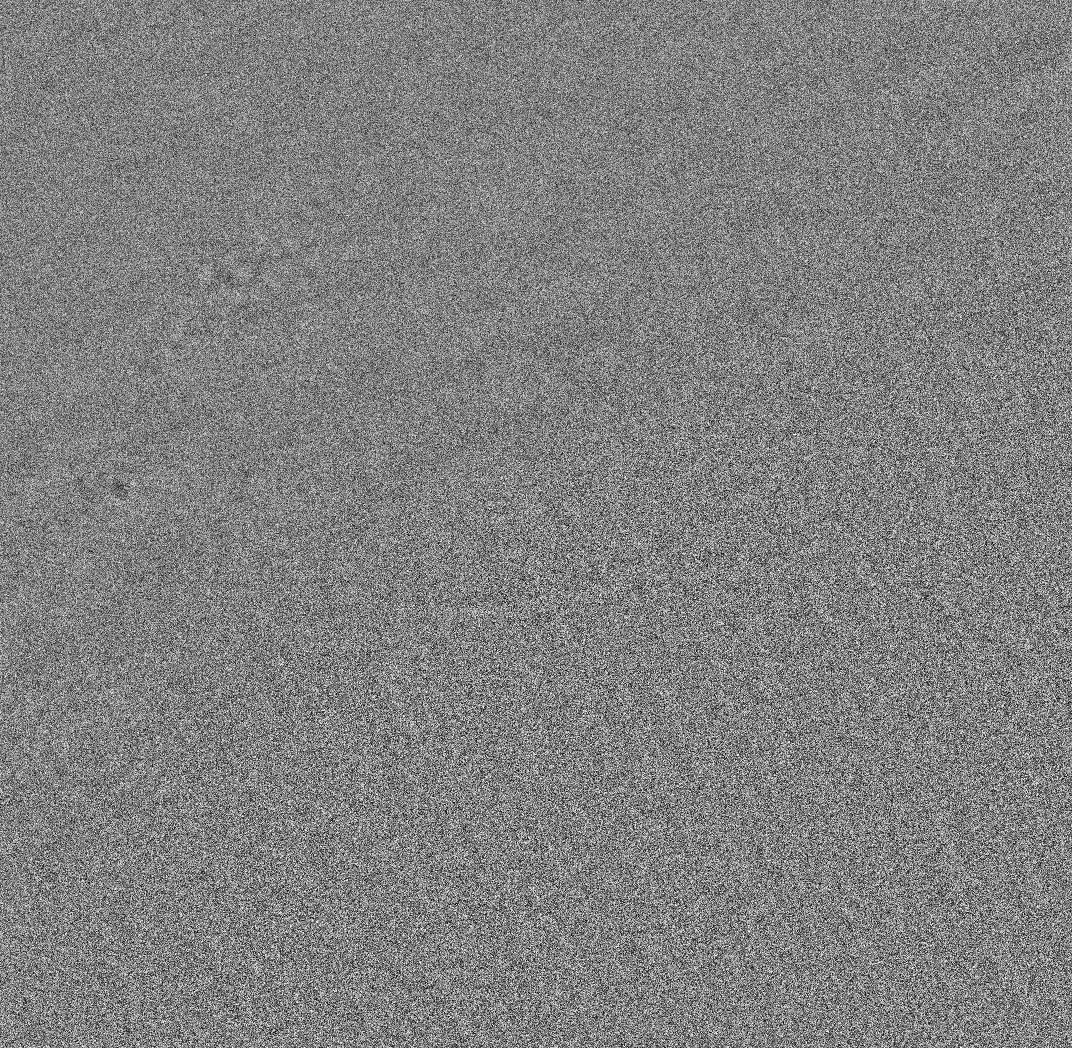
The first seven images, processed with the steps detailed above, were statically added, without aligning on the moving crescent. Aligning on the crescent is difficult, as it is to indistinct to serve as target for aligning the images. Due to the movement of the crescent this stacking is hardly usefull.
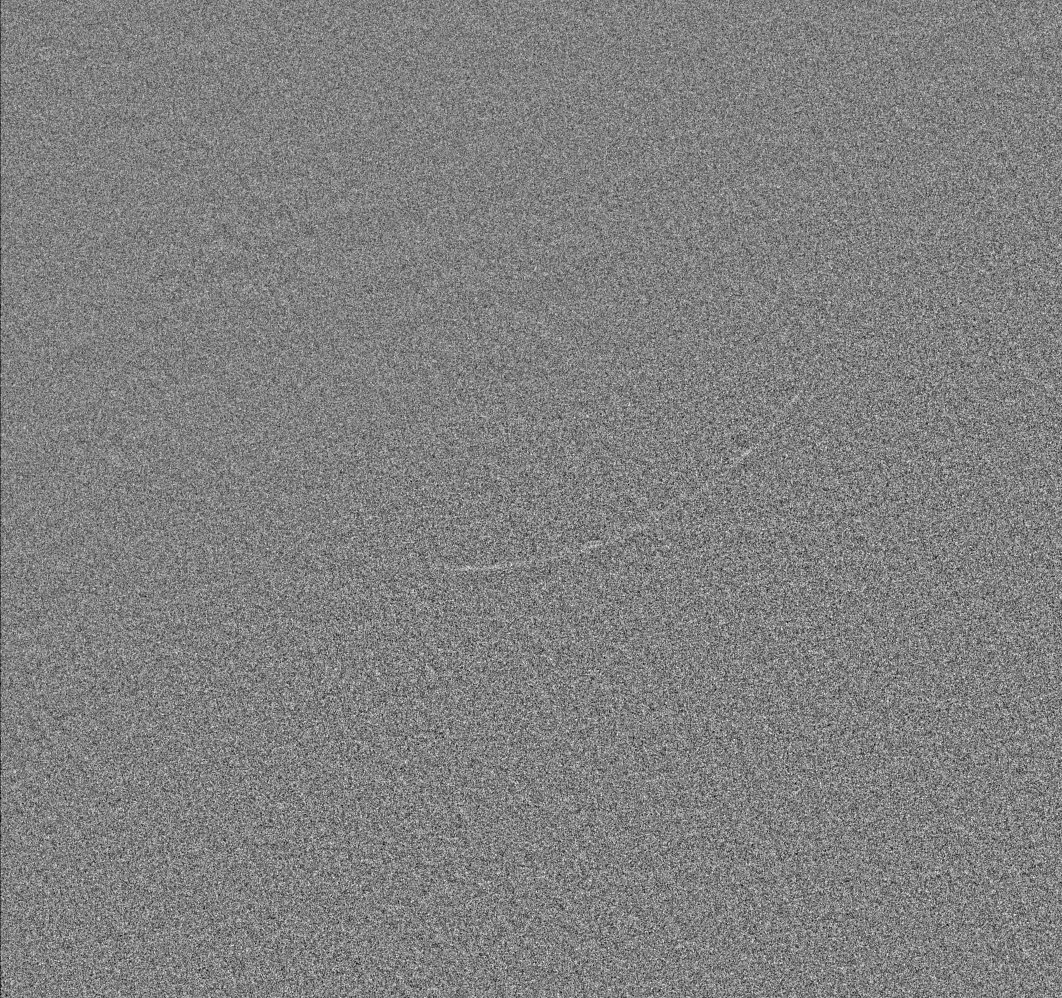
The 14 images were stacked through a dedicated software, which applied a model of the drift for alignment. The movement of the crescent was modelled through a combination of linear drift and periodic wobble, with the exact parameters of the drift found through iterative visual trial and error.
(The drift-parameters were found as: dx=-5.0, dy=-24.0, amplX=1.6, freqX=2.0, phaseX=3.0, which is a linear movement to the upper left, combined with a wobble in x, with small aplitude.)
The crescent has become well visible through this optimized drift-alignment.
The resulting image shows the lunar crescent at 08:40 (average of the series), which is 3hours 27minutes after the exact new-moon.